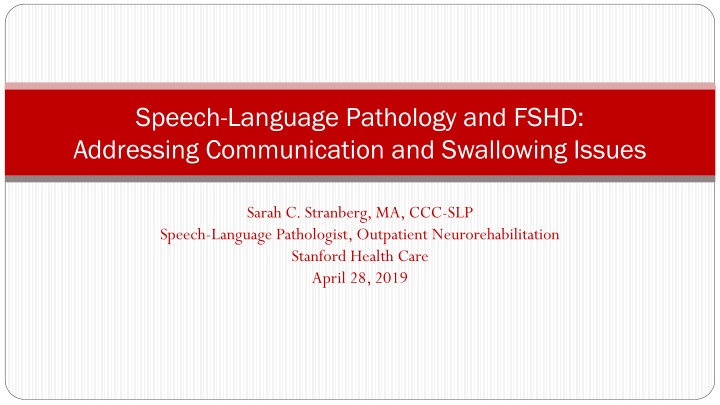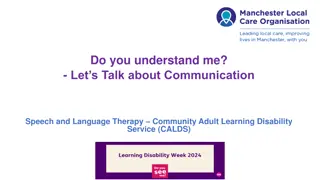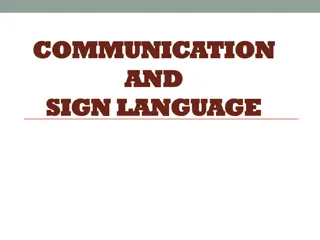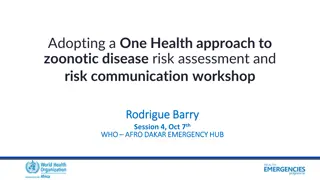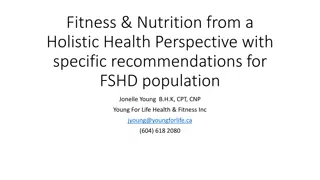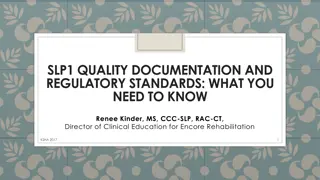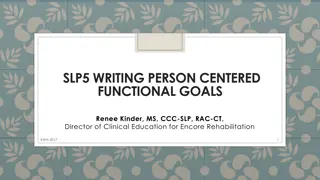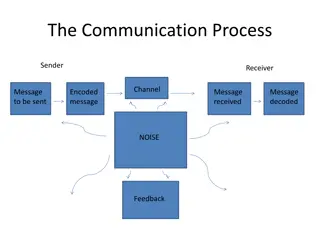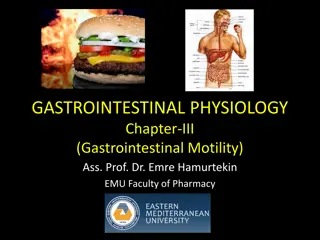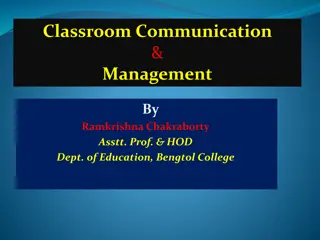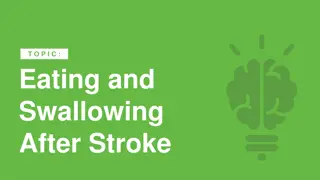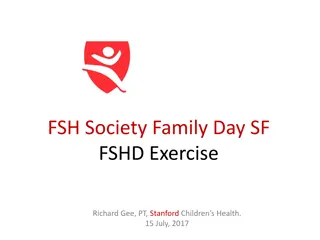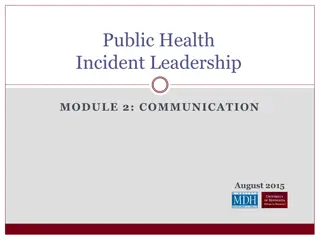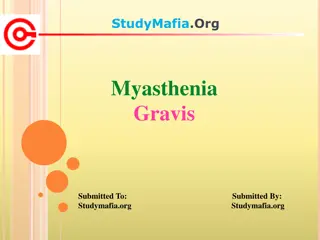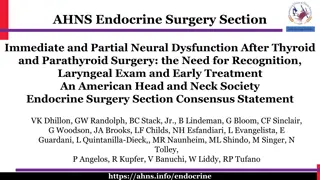Addressing Communication and Swallowing Issues in FSHD
Speech-Language Pathologist Sarah C. Stranberg discusses the impact of FSHD on communication and swallowing abilities, detailing speech weakness affecting articulation, facial expressions, and voice quality. She also addresses swallowing disorders and the evaluation and treatment strategies involved. Various techniques and tools such as compensatory speech strategies, AAC, diet modifications, and safe swallowing strategies are explored to help individuals manage these challenges effectively.
Download Presentation

Please find below an Image/Link to download the presentation.
The content on the website is provided AS IS for your information and personal use only. It may not be sold, licensed, or shared on other websites without obtaining consent from the author.If you encounter any issues during the download, it is possible that the publisher has removed the file from their server.
You are allowed to download the files provided on this website for personal or commercial use, subject to the condition that they are used lawfully. All files are the property of their respective owners.
The content on the website is provided AS IS for your information and personal use only. It may not be sold, licensed, or shared on other websites without obtaining consent from the author.
E N D
Presentation Transcript
Speech-Language Pathology and FSHD: Addressing Communication and Swallowing Issues Sarah C. Stranberg, MA, CCC-SLP Speech-Language Pathologist, Outpatient Neurorehabilitation Stanford Health Care April 28, 2019
FSHD Obicularis Oculi Asymmetrical facial weakness Typically affecting the circular muscles around the eyes and mouth Range of severity Alteration in facial expression Can affect activities that require lip strength Drinking through a straw Whistling Smiling Speech/swallowing (25-35% of pts) Zygomaticus Major Obicularis Oris www.med.stanford.edu/ohns/healthcare/ facialnervecenter.html www.mda.org
Communication issues with FSHD Speech Weakness of lips affecting articulation (sounds such as p, b, m, f, v) Facial expression Reduced facial expression Mismatch between facial expression and content of verbal message Gestures Voice Reduced breath support for speech Can affect quality and intensity (volume) of voice Treatment Compensatory speech strategies (slowing rate, over-articulating) Using prosody/tone to express emotion Maximizing breath support for speech AAC (Alternative and Augmentative Communication): using devices, voice amplifiers
Swallowing issues with FSHD Disorders of swallowing= dysphagia Complex mechanism involving dozens of muscles Dysphagia in FSHD Anterior loss Difficulty with oral phas Oral residue after swallow Evaluation of dysphagia Clinical swallowing evaluation Formal swallowing assessments Treatment Diet modifications Safe swallowing strategies Adaptive utensils/cups Positioning
